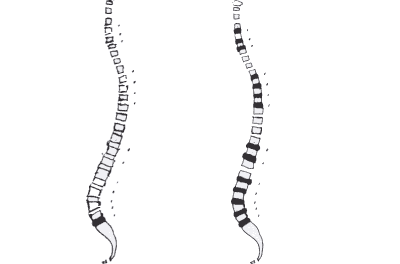Back Pain Diagnosis
Important Information for Advanced Diagnosis of Backpain
Most back pain diagnosis is like the rest of the diagnostic procedures — done from the outside and trying to look into the body. Take the three most common procedures for examining the spine and it&8217;s disks. The X–ray and the CAT scan are both seeing into the body from without. The CAT scan makes the X–rays three dimensional and it is computerized into a visual picture. The MRI does the same thing with lines of magnetism. The variation from this for added perspective is the injection of a contrast medium into the spinal canal. This, by the way, is where the mortality tables start with shock reactions to the contrast media. Also infections are introduced into the spine. This can be real backache. It ran around 2% mortality. Two out of a hundred — died at this stage; could be worse.
Then there are the more physical tests such as the orthopedic tests, neurologic tests, palpations, trigger point tests, Electric Myological tests for muscle and nerve conduction. These are standard and have value as do all of the other tests. The point is all of these test are reaching into the body to “see” in or to “pull out” and examine, such as blood tests.
There has been in the Chiropractic profession developed means of testing the body from WITHIN! The doctors don’t crawl into the body but are able to literally ask the body “what’s wrong?” And the body answers! It is done all the time with the checkups on your new car. The dealer’s computer inquires of your auto’s computer as to any low or outright malfunctions. A Buick dealer stated that he could test for about a hundred things that might be going wrong. The doctor’s knowledgeable in these skills can do between four and five hundred points on the body that light up under examination in a way similar to the red light on your dash, coming on when the battery dies!
Dr. Brice E. Vickery, a world leader in the treatment of back pain developed two tests for the spinal disk lesions. They are the BEV Tests and the Confirmatory Challenge Test (CCT) which consistently are better, safer, and virtually free when included in a routine examination. Compare that with $1500 for the MRI or the CAT Scan! (Insurance dollars are YOUR dollars)
Using the BEV Tests for less obvious diskal lesions it becomes routine to find that besides the areas of complaint the entire spine is deteriorating. To see how the BEV Tests benefit both the doctor and the patient look at the side by side pictures of a lateral view of how the spine looks to doctors using the conventional methods and one using the Vickery tests. The spine with the single disk lesion is what can be discovered by a doctor using say, a CAT scan. The one with the blackened disks all through the spine is what the advanced methods can detect! This has all been put on video for the training of doctors that would like to learn these methods.

The Confirmatory Challenge Test was the first test developed and was the beginning of the amazing revelation that diskal degeneration was common THROUGHOUT THE SPINE. This test is used as the primary diagnosis in patients that cannot stand upright very long, have a positive CAT Scan diagnosis, or have very serious pain. It is for big, serious, diskal lesions.
One other universal error with all of the healing arts has been that they thought that the nerve had to be literally “pinched” by the encroaching diskal lesion before there was cause to worry. The truth about this is now just coming out. The INTRADISKAL LESIONS are as pain producing as the mess discovered by the CAT Scans.




